For the second half of our Egyptian adventure we flew from Aswan to Cairo, where stayed at The First Residence, Four Seasons Hotel Cairo, with views to the Nile.

The Great Pyramids of Giza are the only present-day survivors of the Seven Wonders of the Ancient World. They were built over 4,500 years ago as giant tombs for the mummies of the pharaohs Khufu, Khafre and Menkaure, who were a father, son and grandson.

The pyramids are truly monumental in scale, with the largest – Khufu’s – constructed from over two million blocks, weighing an average of 2.5 tons each. Some blocks weigh as much as 16 tons. It took over 20 years to be built: 2589- 2566BC.
The discovery 40 years ago of 2,400 tombs of the workers who built the pyramids further dispelled the popular belief that the pyramids were built by Hebrew/Jewish or other slaves. The writings found in the tombs revealed that the builders were mostly Egyptian peasants and farmers, looking for a paycheck during the ‘off-season’. 100,000 people worked on the Great Pyramid for 3 months of each year, during the Nile’s annual flood when it was impossible to farm the land and most of the population was unemployed. The pharaoh provided good food and clothing for his workers, and was kindly remembered in folk tales for many centuries.
Although pyramid-building in stone continued until the end of the Old Kingdom (for about 400 years to 2150 BC), the pyramids of Giza were never surpassed in their size and the technical excellence of their construction. New Kingdom ancient Egyptians (1550-1070 BC) marveled at their predecessors’ monuments, which were then well over a thousand years old.

The pyramids of Giza were royal tombs built for three different pharaohs in the 4th dynasty. The pyramid on the left was completed around 2560 BC and is the oldest and largest of the group. Called the Great Pyramid, it was built for Khufu (Greek: Cheops). The pyramid in the middle was built for Khafre (Greek: Chephren), Khufu’s son. The pyramid on the right, which was the last of the three to be built, was that of Menkaure (Greek: Mykerinus), Khufu’s grandson.
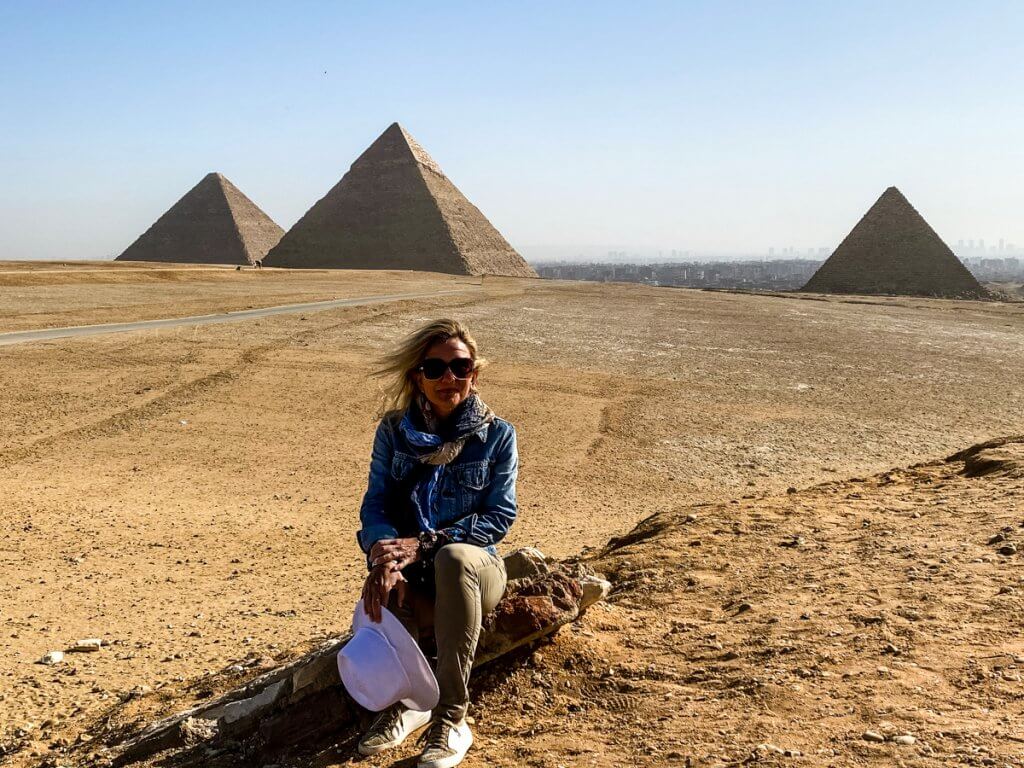
The Great Pyramid of Giza (on the left) is the oldest – and only still-standing – monument on the list of the Seven Wonders of the Ancient World. 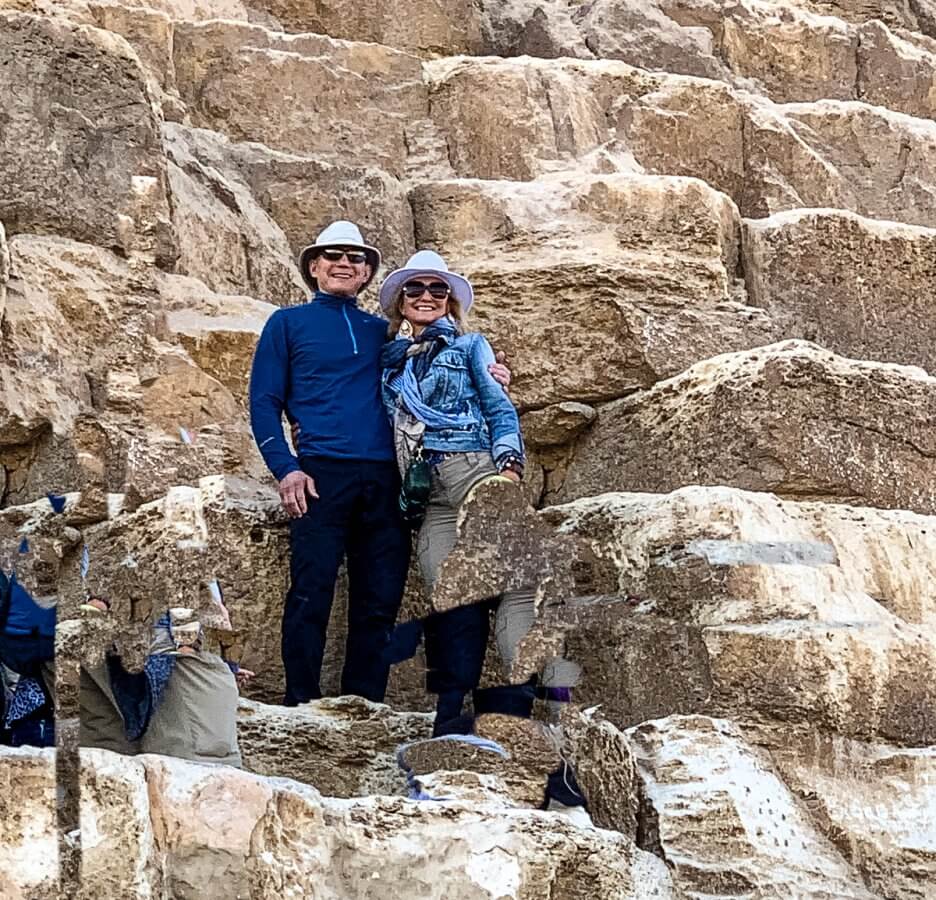
20′ up on the Great Pyramid. 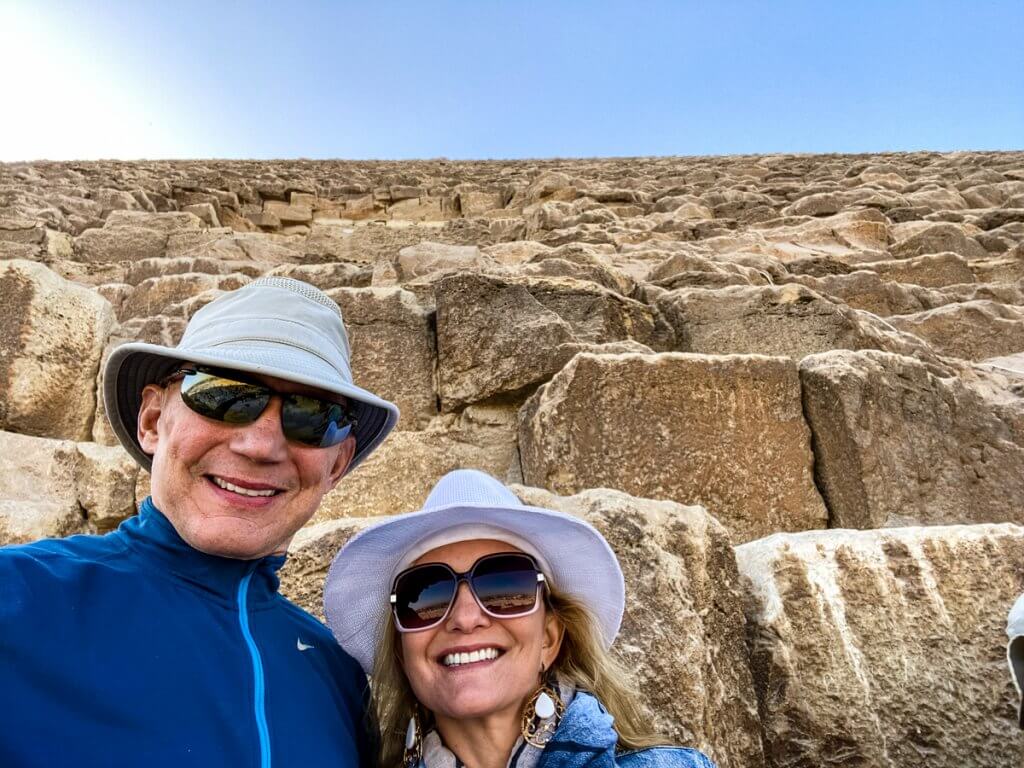
The Great Pyramid has a 51 degree slope and is composed of about 2.3 million blocks. Each block seemed to be around 30″ tall. 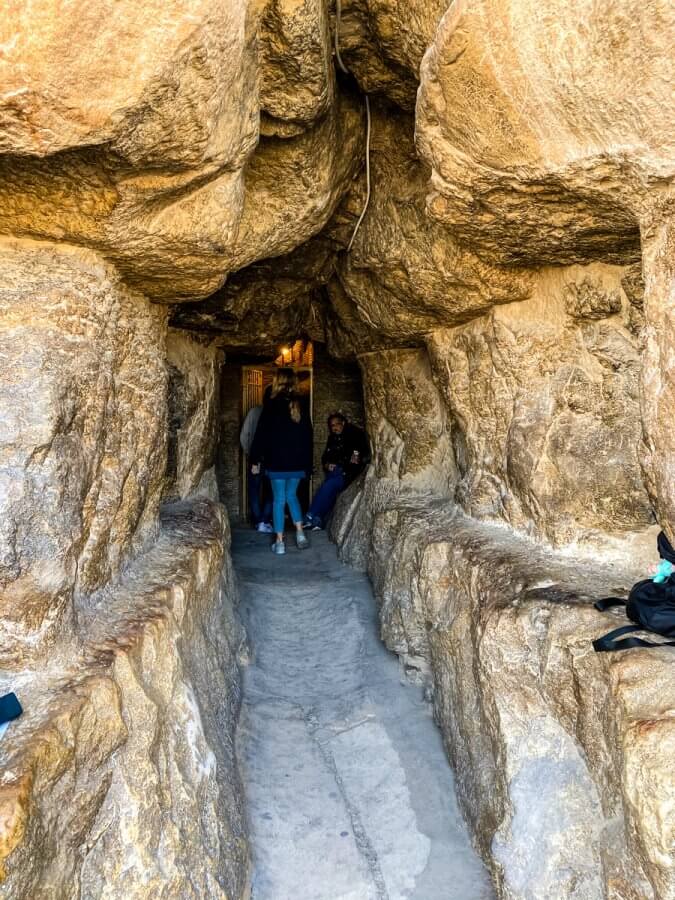
The tunnel to the burial chamber in the Great Pyramid. Mark said “no thanks”. 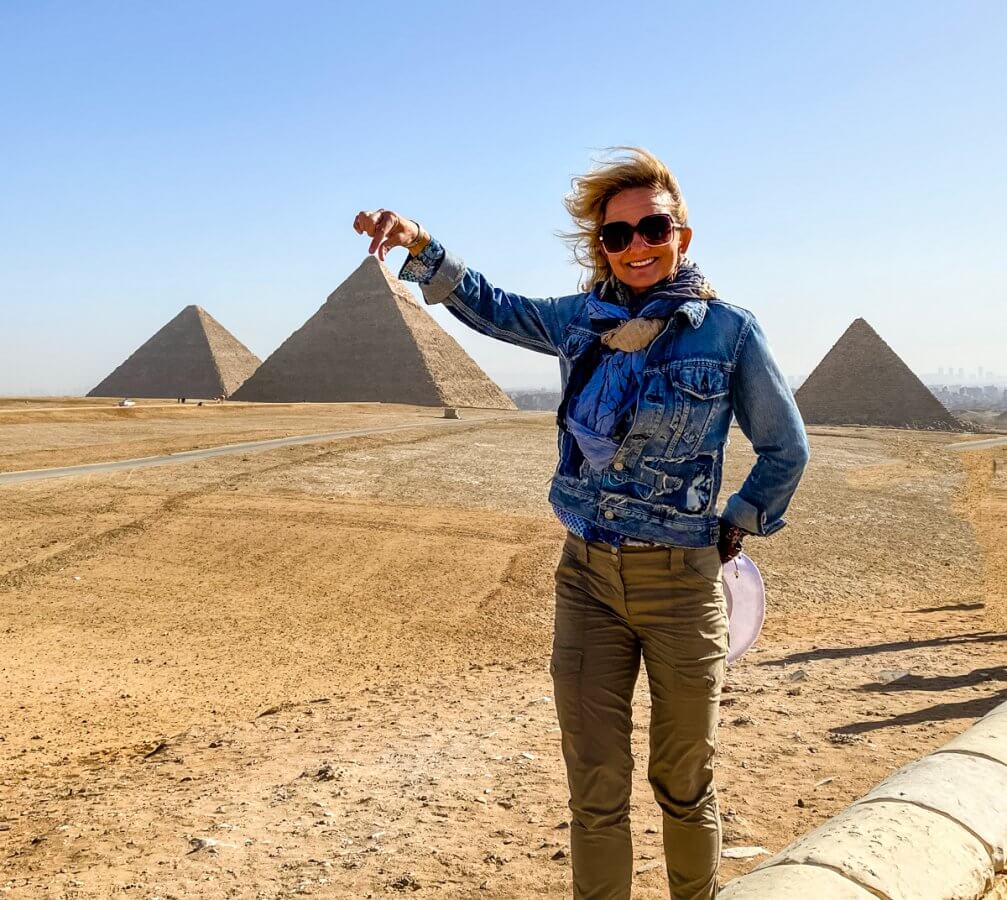
The Khafre pyramid that Shauna is holding is 471 feet tall. The Great Pyramid on the left is 481 feet tall. The illusion that it is shorter than Khafre’s pyramid is due to being built on lower ground and further in the distance. The Menkaure pyramid on the right is considerably shorter with a height of 218 feet. 
The Khafre pyramid is the only pyramid that still has some of the finished limestone intact at its top… 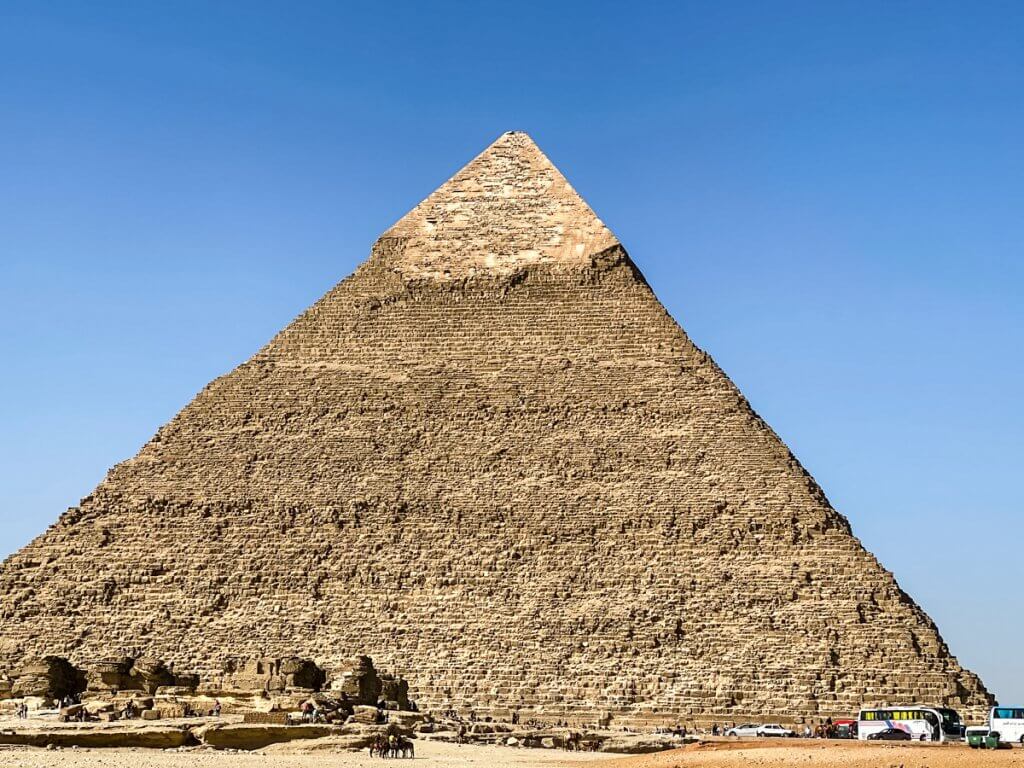
….which can be better seen in this picture. The Greeks, Romans and even modern Egyptians pilfered the higher-quality white limestone for their buildings in later times. 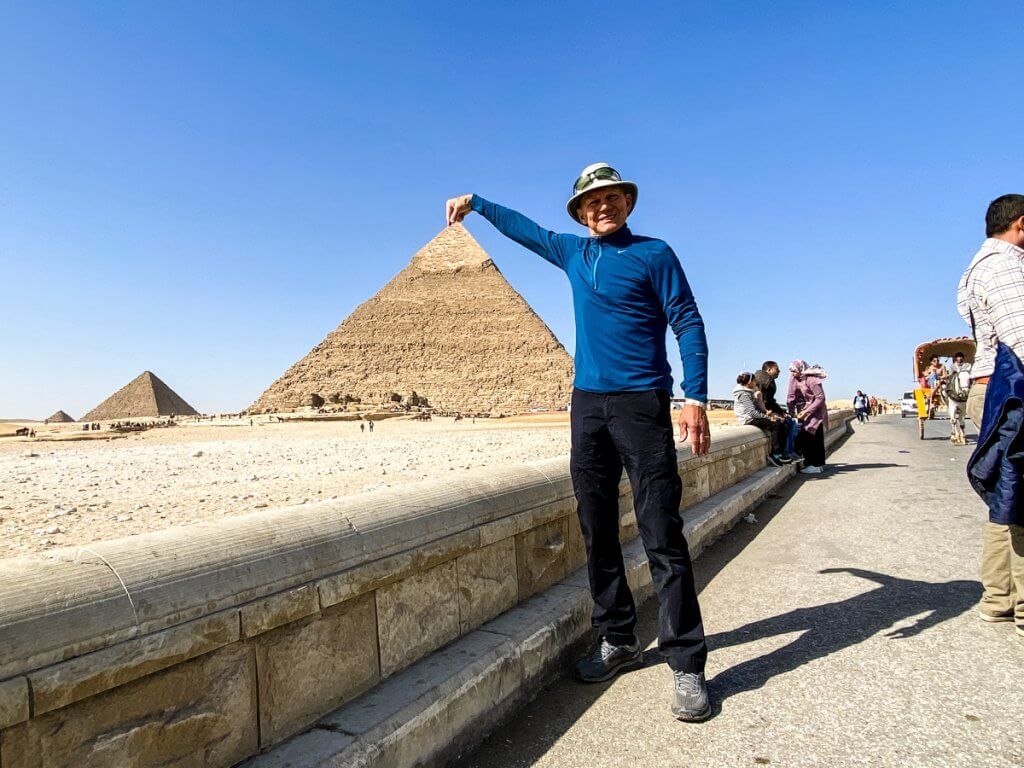
No Mark, the top won’t come off.
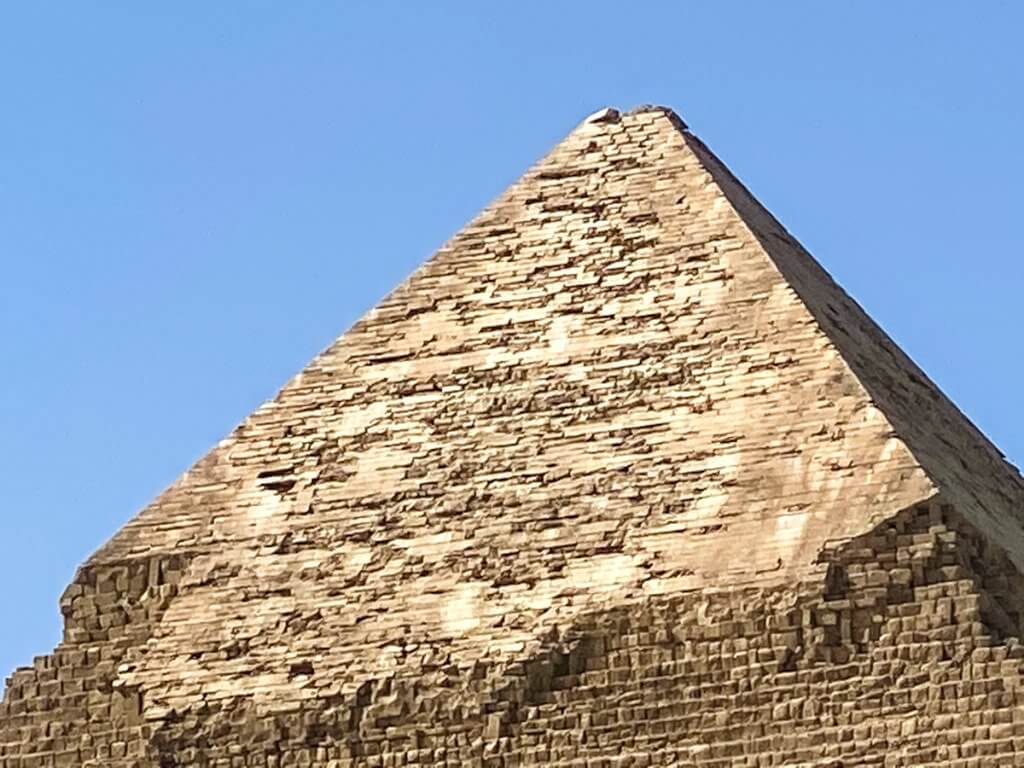
A close-up of the finished top.
A First: Camel Rides!

We decided to check the available Hertz rent-a-camel herd. 
We first had to show that we had a valid camel drivers license. 
We were then ready to go. 
Hey…..”are you sure about this?” 
Look…no hands. 
Ditto! 
The camel is braying “GET A ROOM!!!!”
Memphis and the First Pyramids
Sneferu’s Pyramids
Khufu’s Great Pyramid was not the first pyramid built however. He had the benefit of learning from the prototypes constructed by his father, Sneferu. Sneferu, 2686 – 2667 BC, the 1st king of the 4th dynasty, was the first to create the true pyramid shape that we all recognize and associate with Egyptian architecture. He built three pyramids in all—but the first two were glorious failures.

His first, the pyramid at Medum, began as a step pyramid and was then modified to form the first true pyramid. But it was unstable and the limestone blocks began to slip. Soon, work on it was abandoned. King Sneferu then moved to Dahshur and built a second pyramid, which we now know as the “Bent Pyramid” because its upper part rises at a shallower angle of incline than the lower part.
The Bent Pyramid was originally planned as a true pyramid, but the corners were built on unstable ground and the walls of the burial chambers inside began to crack and shift inward. Of necessity, the building’s geometry was altered at a point just above half its height. The angle of incline was decreased from 54º to 43º. This was probably done to alleviate the stresses in the lower part of the pyramid and make it stronger. But the bent pyramid was never used. Instead, Sneferu began a third pyramid about a mile way. This one is called the red pyramid because of the red limestone blocks used in its construction. It became the world’s first successful true pyramid, with a 51º slope to its sides. (from discoveringegypt.com)
Memphis and the Step Pyramid
We didn’t visit Sneferu’s pyramids – only saw them in the distance – but we did visit Memphis, just outside Cairo. Memphis was allegedly founded by the king Menes (c. 3150 BC) who united the two lands of Egypt into a single country, and it served as the first capital of the united kingdom.
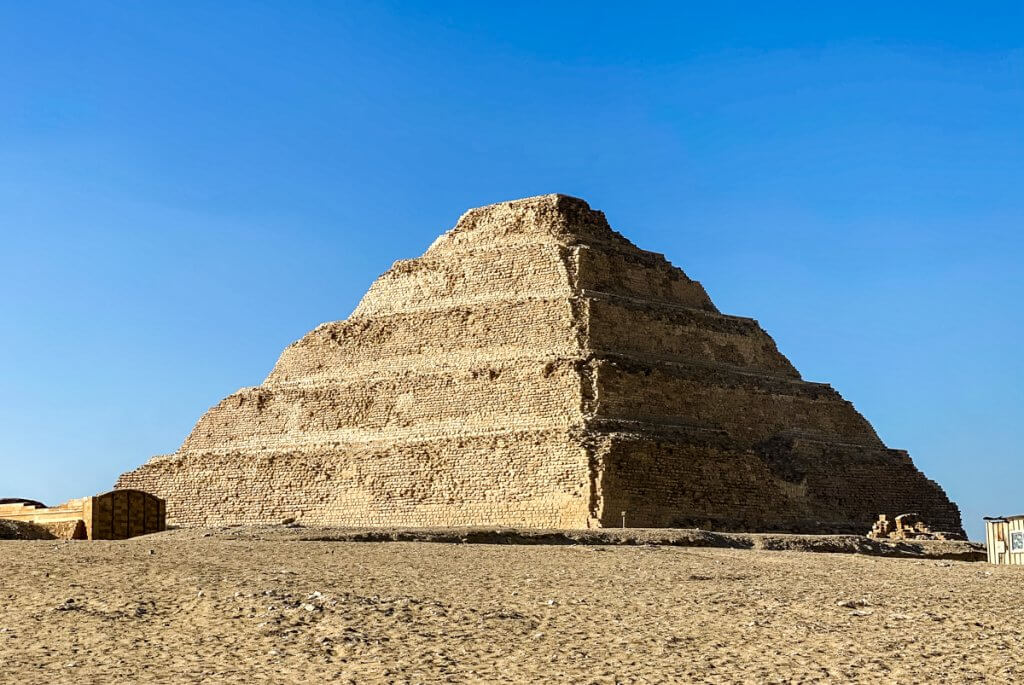
The oldest construction we visited was the “step” pyramid erected for King Zoser/Djoser between 2667-2648 BC, almost 100 years before the Giza pyramids. In fact it is the first monumental stone building designed and constructed that we know of. 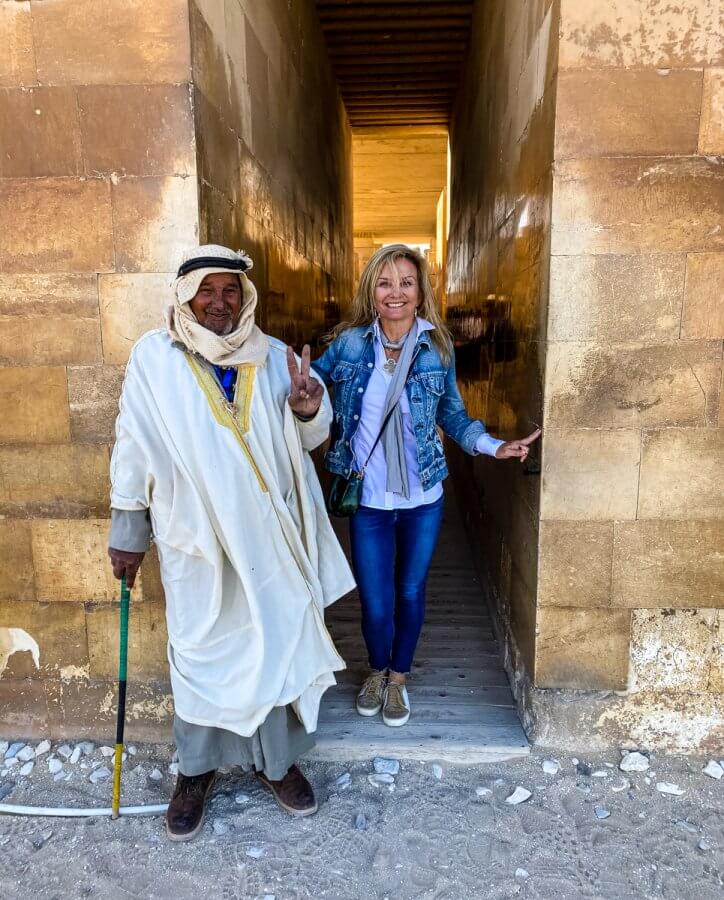
Our guide (incidentally, not the guy in the picture) told us that this entrance to the step pyramid grounds was the first building ever made out of limestone – around 2667 BC. 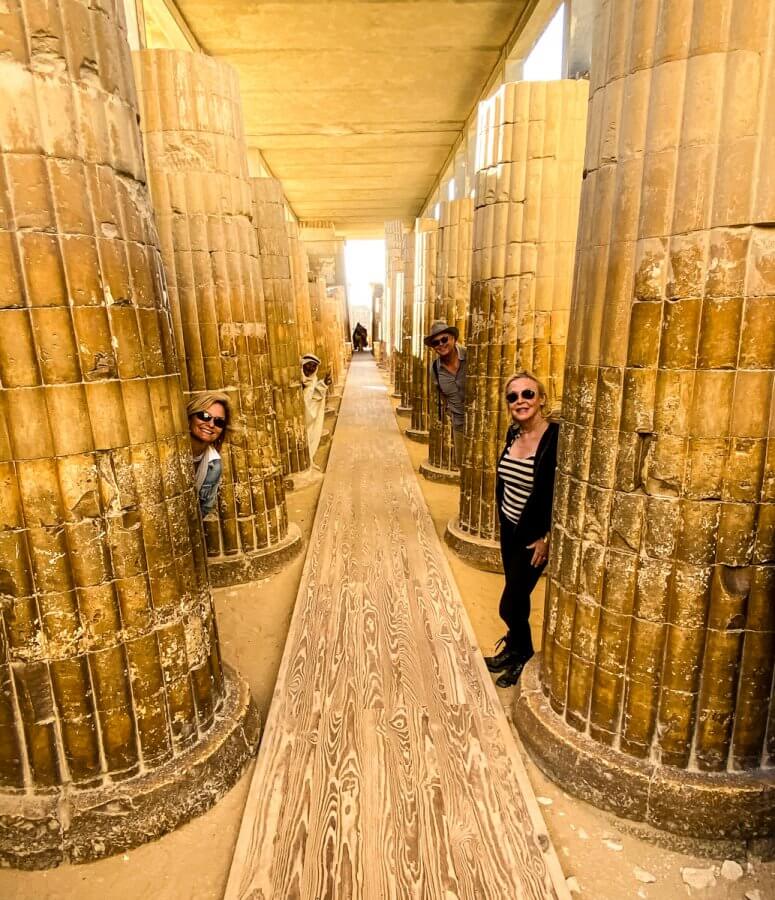
The columns from this building are amazingly intact given that they are almost 4,700 years old. 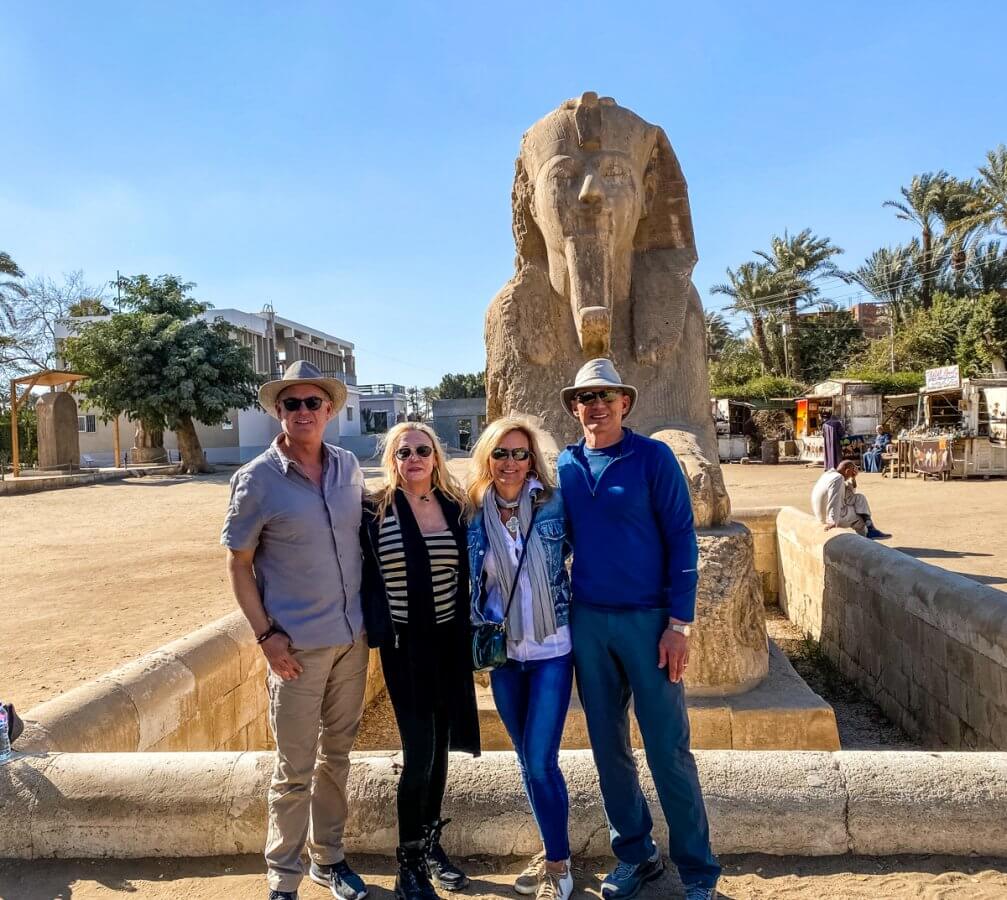
A Sphinx believed to be dedicated to Queen Hatshepsut, found at Memphis, the first capital of Ancient Greece. 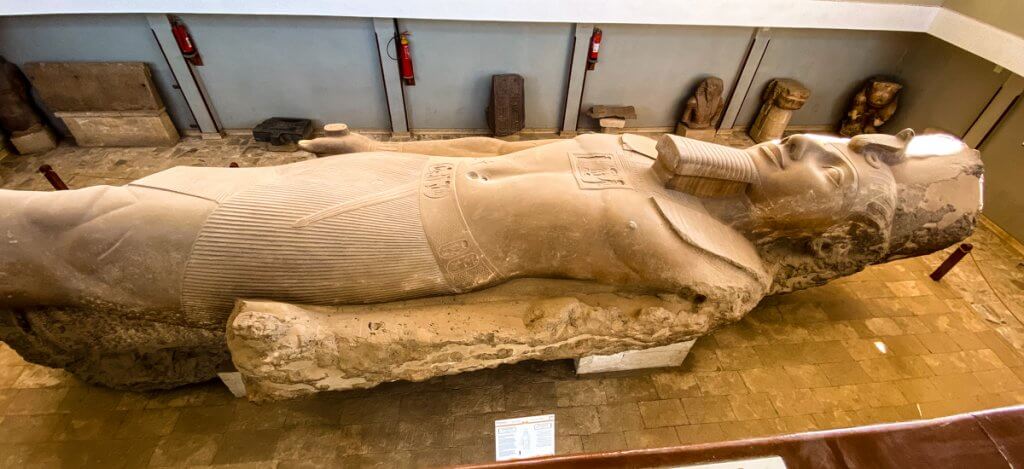
This giant statue of the Ramses II was discovered in 1820. It is carved of monumental limestone and is about 10 meters in length. Because the base and feet of the sculpture are broken off from the rest of the body, it is currently displayed lying on its back. 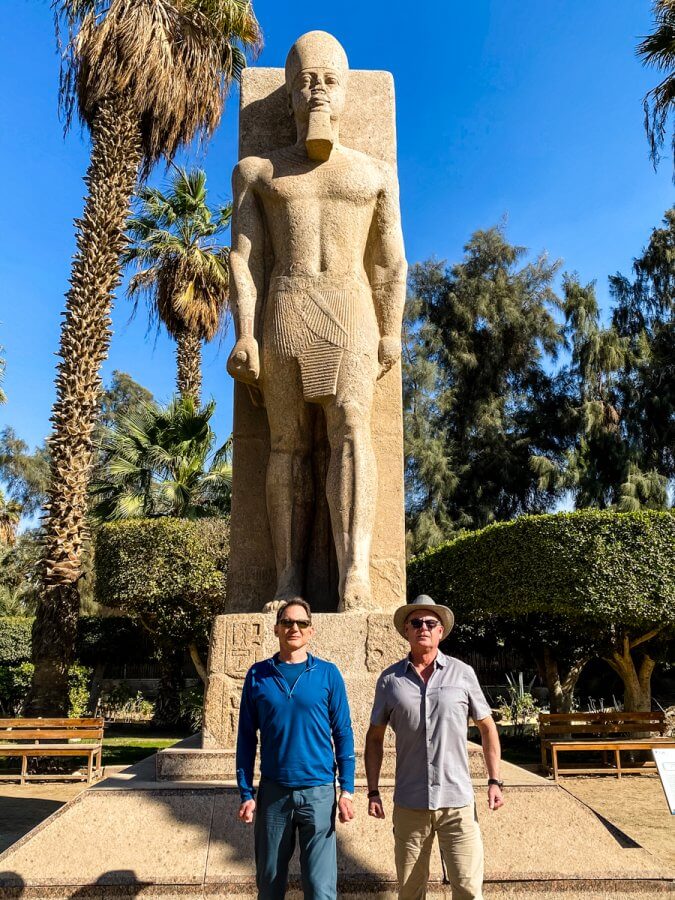
A sculpture of Ramses II (b. 1304 BC), also known as Ramses the Great, the third pharaoh of the 19th Dynasty of Egypt – often regarded as the greatest, most celebrated, and most powerful pharaoh of the New Kingdom. Powerful dudes in front too.
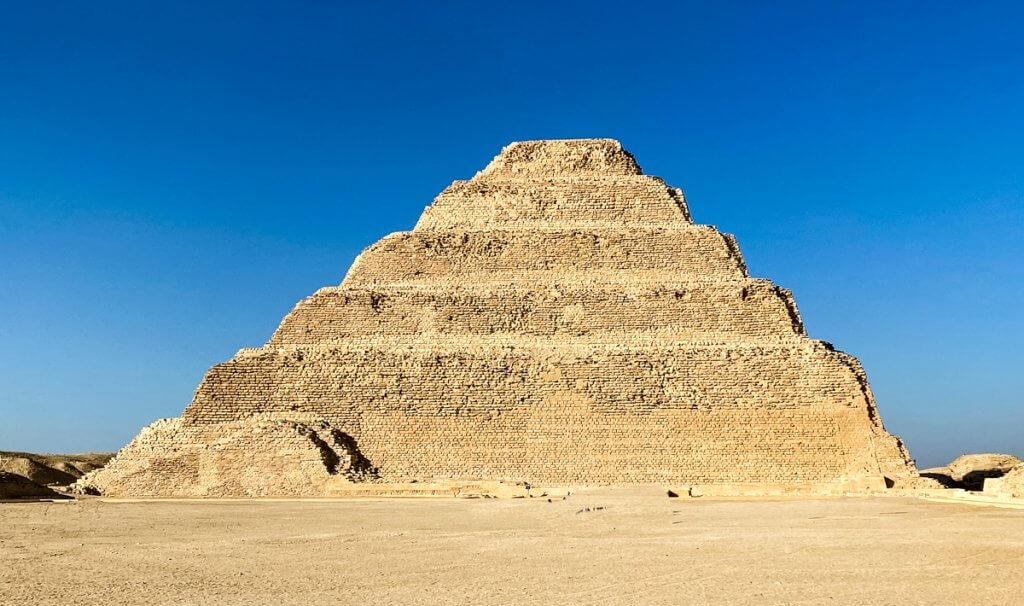
Another view of the step pyramid, oldest limestone monument at nearly 4,700 years old.
Khufu’s Ship
Of course the pyramids are mind-blowing and impressive, but not far behind was the Khufu Ship, or the Solar Boat. At 4,600 years old, this is the oldest boat still surviving from any civilization to date.
The Khufu ship is a full-size boat that was sealed into a pit at the foot of the Great Pyramid of Giza around 2500 BC. The ship was originally dismantled and buried in a limestone protected vault. After discovery in 1954, Egyptian fishermen who still make boats in a similar style were brought in to reconstruct the boat. It is now preserved in the Giza Solar boat museum. The ship was almost certainly built for Khufu (King Cheops), the second pharaoh of the Fourth Dynasty of the Old Kingdom of Egypt. It was apparently part of the extensive grave goods intended for use in the afterlife.
It is of the type known as a “solar barge“, a ritual vessel to carry the resurrected king with the sun god Ra across the heavens. However, it bears some signs of having been used in water, and it is possible that the ship was either a funerary “barge” used to carry the king’s embalmed body from Memphis to Giza, or even that Khufu himself used it as a “pilgrimage ship” to visit holy places and that it was then buried for him to use in the afterlife.
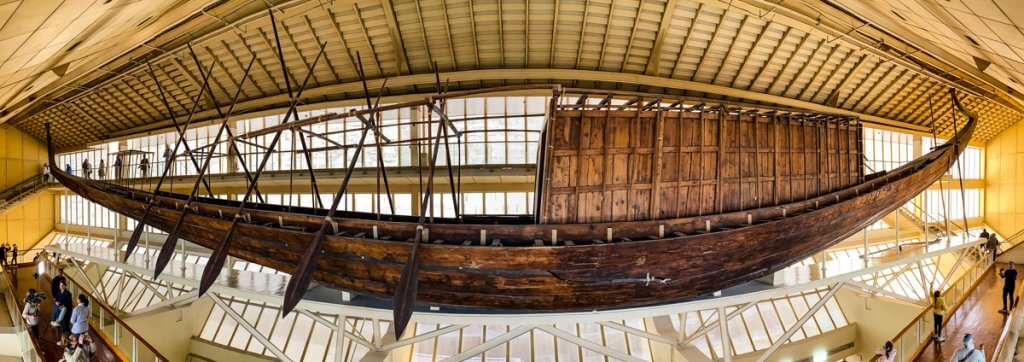
Khufu’s ship is one of the oldest, largest and best-preserved vessels from antiquity. It measures 43.6 m (143 ft) long and 5.9 m (19.5 ft) wide. It was thus identified as the world’s oldest intact ship and has been described as “a masterpiece of woodcraft” that could sail today if put into water, lake and river. However, the vessel may not have been designed for sailing, as there is no rigging, or for paddling, as there is little rowing room.
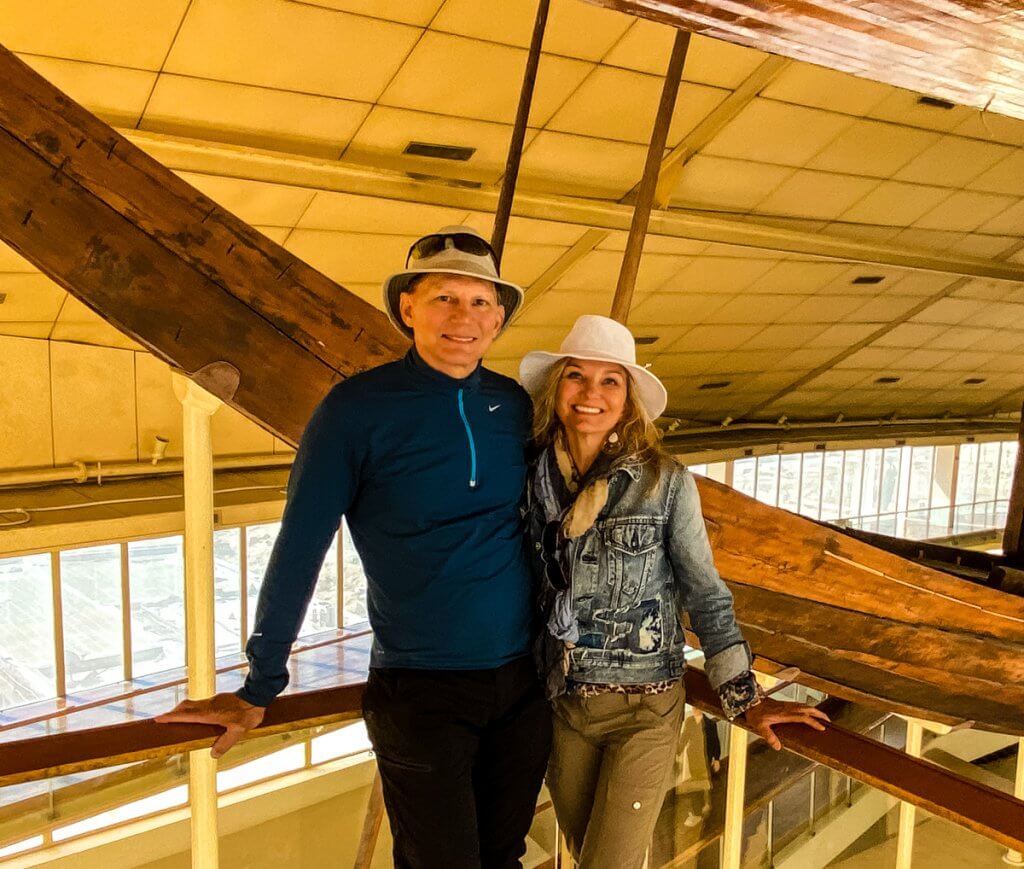
The ship is housed in The Khufu Boat Museum, a small modern facility resting alongside the Great Pyramid. 
This shows the “helm station” if it can be called that. 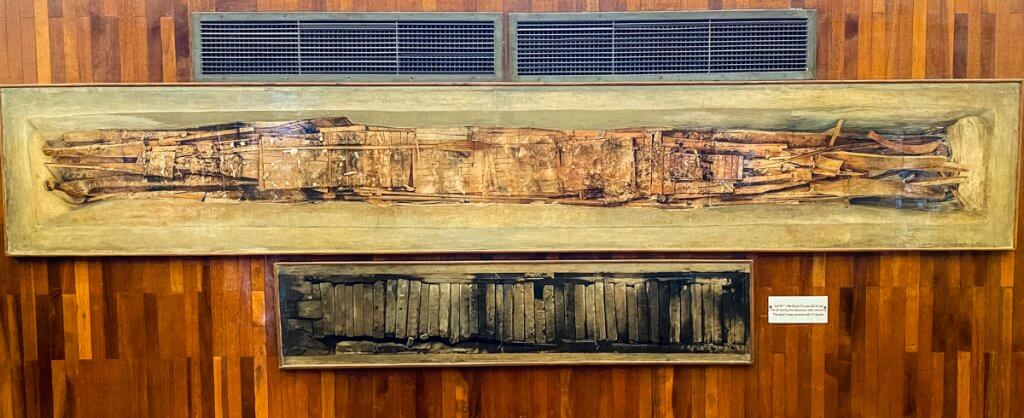
Pictures of the buried “deconstructed” ship and the ship’s tomb as it was found in 1954. 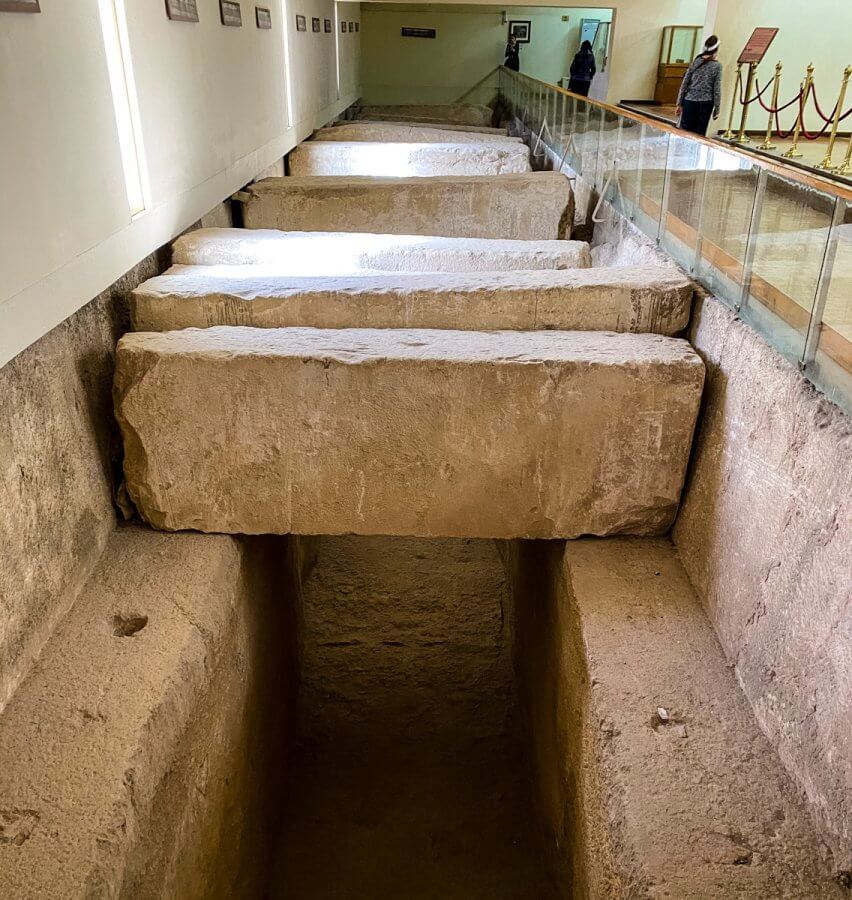
The actual tomb for the deconstructed ship. 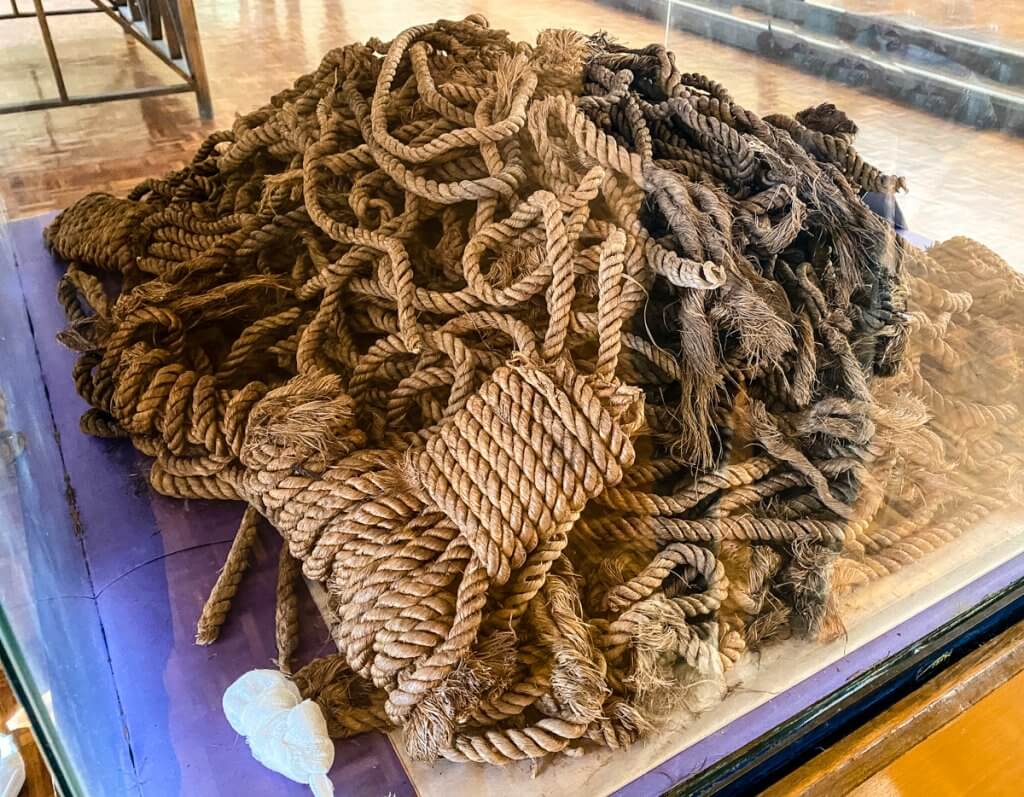
Actual rigging from Khufu’s buried ship. The ropes were preserved in jars of oil. 4,600 years old! 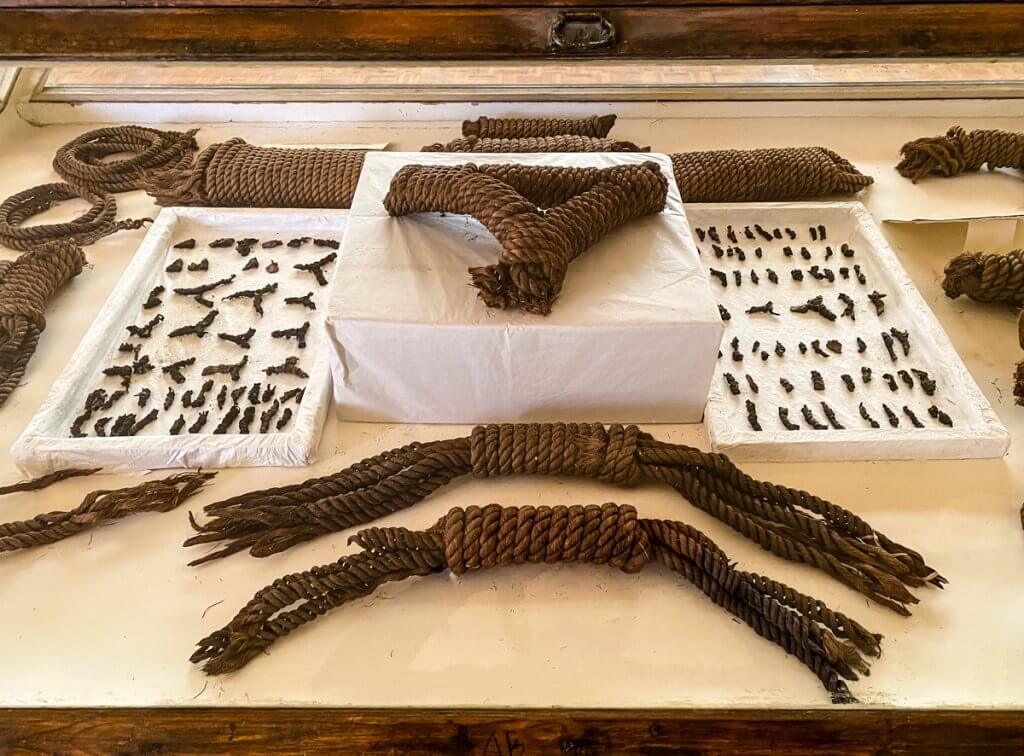
More rigging from Khufu’s buried ship. Somebody went to knot-tying class!
The Sphinx
Nearby sits the enigmatic Sphinx with the body of a lion and the face of a man wearing a royal head cloth. It is believed that workers may have based the face on King Khafre to guard his enormous funerary monument.

About a thousand years after the Sphinx was built, it was covered in sand until a young prince had a dream in which the Sphinx told him that if he cleared the sand away, he would become Pharaoh. This story is told on the ‘Dream Stela’ that was placed between the Sphinx’s paws by King Tuthmose IV.
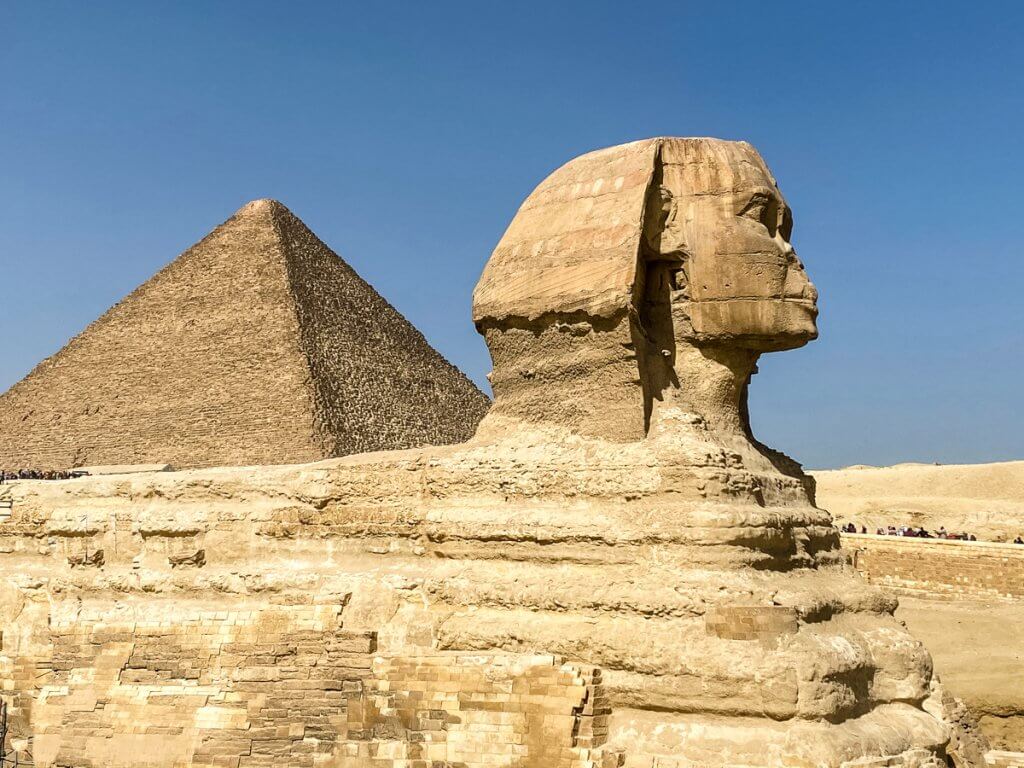
Cut from the bedrock, the original shape of the Sphinx has been restored with layers of blocks. It measures 240 ft long from paw to tail, 66 ft high from the base to the top of the head and 62 ft wide at its rear haunches. 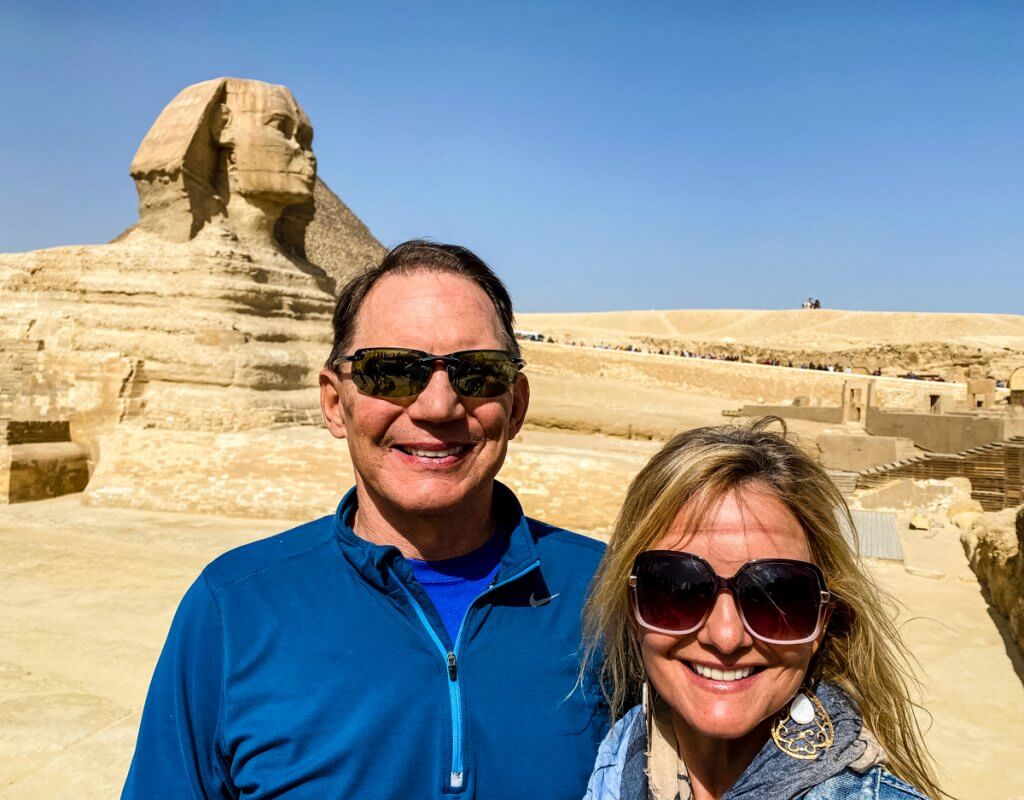
It is the oldest known monumental sculpture in Egypt and is commonly believed to have been designed, sculpted, and constructed by ancient Egyptians of during the reign of the pharaoh Khafre (c. 2558–2532 BC).

A group picture with our knowledgeable Egyptologist, Wael Aly. Don’t know anything about the photo bombers in the background.


Excellent!!! Showing to Rhys tonight!